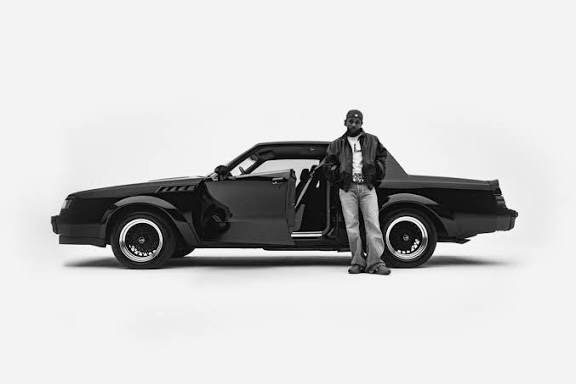Pete Seeger
sang until his voice wore out, and then he kept on singing, decade upon
decade. Mr. Seeger, who died on Monday at 94, sang for children,
folk-music devotees, union members, civil-rights marchers, antiwar
protesters, environmentalists and everyone else drawn to a repertoire
that extended from ancient ballads to brand-new songs about every cause
that moved him. But it wasn’t his own voice he wanted to hear. He wanted
everyone to sing along.
sang until his voice wore out, and then he kept on singing, decade upon
decade. Mr. Seeger, who died on Monday at 94, sang for children,
folk-music devotees, union members, civil-rights marchers, antiwar
protesters, environmentalists and everyone else drawn to a repertoire
that extended from ancient ballads to brand-new songs about every cause
that moved him. But it wasn’t his own voice he wanted to hear. He wanted
everyone to sing along.
Although
Mr. Seeger summed up Vietnam-era frustration when he wrote “Waist Deep
in the Big Muddy” and created a lasting antiwar parable with “Where Have
All the Flowers Gone?,” he wasn’t simply a protest singer or
propagandist. Like his father, the musicologist Charles Seeger, and his
colleague the ethnomusicologist Alan Lomax, Pete Seeger was devoted to
songs that had been passed on through generations of people singing and
playing together. He was determined — in an era when recording was rarer
and broadcasting limited — to get those songs heard and sung anew, lest
they disappear.
That
put him at the center of the folk revival of the 1950s and 1960s, in
all its idealism, earnestness and contradictions. Collectors found songs
that had archetypal resonance, sung in unpretty voices and played with
regional quirks, and transcribed them to be learned from sheet music.
The folk revival prized authenticity — the work song recorded in prison,
the fiddle tune recorded on a back porch — and then diluted it as the
making of amateur collegiate strum-alongs. Mr. Seeger and his fellow
folk revivalists freely adapted old songs to new occasions, using
durable old tunes to carry topical thoughts, speaking of a “folk
tradition” of communal authorship and inevitable change. They would warp
a song to preserve it. (In succeeding years, copyright problems could and did ensue.)
put him at the center of the folk revival of the 1950s and 1960s, in
all its idealism, earnestness and contradictions. Collectors found songs
that had archetypal resonance, sung in unpretty voices and played with
regional quirks, and transcribed them to be learned from sheet music.
The folk revival prized authenticity — the work song recorded in prison,
the fiddle tune recorded on a back porch — and then diluted it as the
making of amateur collegiate strum-alongs. Mr. Seeger and his fellow
folk revivalists freely adapted old songs to new occasions, using
durable old tunes to carry topical thoughts, speaking of a “folk
tradition” of communal authorship and inevitable change. They would warp
a song to preserve it. (In succeeding years, copyright problems could and did ensue.)
It
was an era of purists generating the impure, and, sloppy or saccharine
as it could be, it turned out well. Folk-revival ditties pointed their
more dedicated listeners — particularly musicians — back to original
versions, extending the reach of regional styles. The hootenanny
movement spurred people to play music instead of passively consume it,
and the noncommercial, do-it-yourself spirit — though not the sound of
banjos and acoustic guitars — would resound in punk-rock, which had its
own kind of protest songs.
was an era of purists generating the impure, and, sloppy or saccharine
as it could be, it turned out well. Folk-revival ditties pointed their
more dedicated listeners — particularly musicians — back to original
versions, extending the reach of regional styles. The hootenanny
movement spurred people to play music instead of passively consume it,
and the noncommercial, do-it-yourself spirit — though not the sound of
banjos and acoustic guitars — would resound in punk-rock, which had its
own kind of protest songs.

Launch media viewer
Even
more important, the folk revival, with Mr. Seeger as one of its prime
movers, introduced American pop to a different America: the one outside
Tin Pan Alley and Hollywood, where a volunteer gospel choir could sing
with more gumption than a studio chorus, and where a decades-old song
about hard times could speak directly to the present. The folk revival
reminded the pop world that songs could be about something more than
romance — a notion that the revival’s greatest student and transformer,
Bob Dylan, would run with. Mr. Seeger also learned and performed songs
from abroad; there were folks there, too.
more important, the folk revival, with Mr. Seeger as one of its prime
movers, introduced American pop to a different America: the one outside
Tin Pan Alley and Hollywood, where a volunteer gospel choir could sing
with more gumption than a studio chorus, and where a decades-old song
about hard times could speak directly to the present. The folk revival
reminded the pop world that songs could be about something more than
romance — a notion that the revival’s greatest student and transformer,
Bob Dylan, would run with. Mr. Seeger also learned and performed songs
from abroad; there were folks there, too.
Mr.
Seeger’s discography runs to dozens of albums: topical songs, Mother
Goose rhymes, banjo instruction, African songs, lullabies, blues, Civil
War songs, Spanish Civil War songs and far more. His canon was selective
but not exclusive; he wanted all those songs to get more chances. His
cultural mission was democratic.
Seeger’s discography runs to dozens of albums: topical songs, Mother
Goose rhymes, banjo instruction, African songs, lullabies, blues, Civil
War songs, Spanish Civil War songs and far more. His canon was selective
but not exclusive; he wanted all those songs to get more chances. His
cultural mission was democratic.

Launch media viewer
His mission was political too, of course. In 2012, Mr. Seeger told an interviewer on WNYC
how he would like to be remembered: “He made up songs to try and
persuade people to do something,” not just say something. As the 1940s
began, he recorded songs reflecting the Communist party line;
accusations of Communist Party affiliations got him questioned by the House Un-American Activities Committee
and blacklisted during the McCarthy era. More felicitously, Mr. Seeger
recast traditional songs to rally unions, civil-rights groups, Vietnam
War protesters and environmentalists. Mr. Seeger was a longtime mentor
for topical songwriters. The best of his own songs, like the biblical
“Turn! Turn! Turn!” and “Where Have All the Flowers Gone?” reach for
cycles and archetypes, not ephemeral complaints.
how he would like to be remembered: “He made up songs to try and
persuade people to do something,” not just say something. As the 1940s
began, he recorded songs reflecting the Communist party line;
accusations of Communist Party affiliations got him questioned by the House Un-American Activities Committee
and blacklisted during the McCarthy era. More felicitously, Mr. Seeger
recast traditional songs to rally unions, civil-rights groups, Vietnam
War protesters and environmentalists. Mr. Seeger was a longtime mentor
for topical songwriters. The best of his own songs, like the biblical
“Turn! Turn! Turn!” and “Where Have All the Flowers Gone?” reach for
cycles and archetypes, not ephemeral complaints.
Pop
tastes quickly turned away from the folk revival; the Beatles were more
fun. In the 21st century, folky protest and topical songs have
generally been shunted to the far sidelines. Although Bruce Springsteen
has taken songs from Mr. Seeger’s repertory to arenas, social
consciousness is now disseminated more widely through metal and hip-hop.
Yet the plink of acoustic instruments is still a token of sincerity.
The banjo has resurfaced in groups like Mumford & Sons, while
fascination with the folk-revival era animates the Coen brothers film “Inside Llewyn Davis.”
tastes quickly turned away from the folk revival; the Beatles were more
fun. In the 21st century, folky protest and topical songs have
generally been shunted to the far sidelines. Although Bruce Springsteen
has taken songs from Mr. Seeger’s repertory to arenas, social
consciousness is now disseminated more widely through metal and hip-hop.
Yet the plink of acoustic instruments is still a token of sincerity.
The banjo has resurfaced in groups like Mumford & Sons, while
fascination with the folk-revival era animates the Coen brothers film “Inside Llewyn Davis.”
Yet Mr. Seeger wasn’t aiming for pop celebrity anyway. He had all the audiences he needed: at Carnegie Hall or at Barack Obama’s inauguration or at a local coffeehouse, in a high-school classroom or at a union meeting.
He had the kindly demeanor of a favorite uncle and the encouraging tone
of a secular preacher as he picked his banjo and taught another chorus
to yet another audience, beaming as the singalong grew louder and more
confident, turning one more group of folks into a community.
He had the kindly demeanor of a favorite uncle and the encouraging tone
of a secular preacher as he picked his banjo and taught another chorus
to yet another audience, beaming as the singalong grew louder and more
confident, turning one more group of folks into a community.




